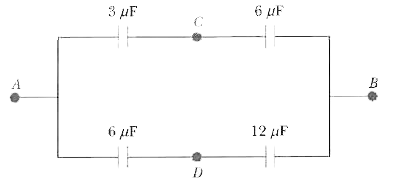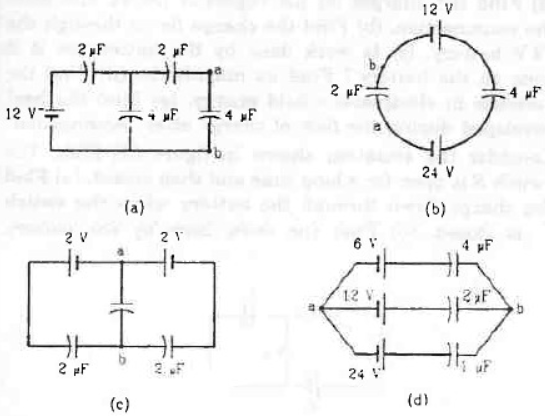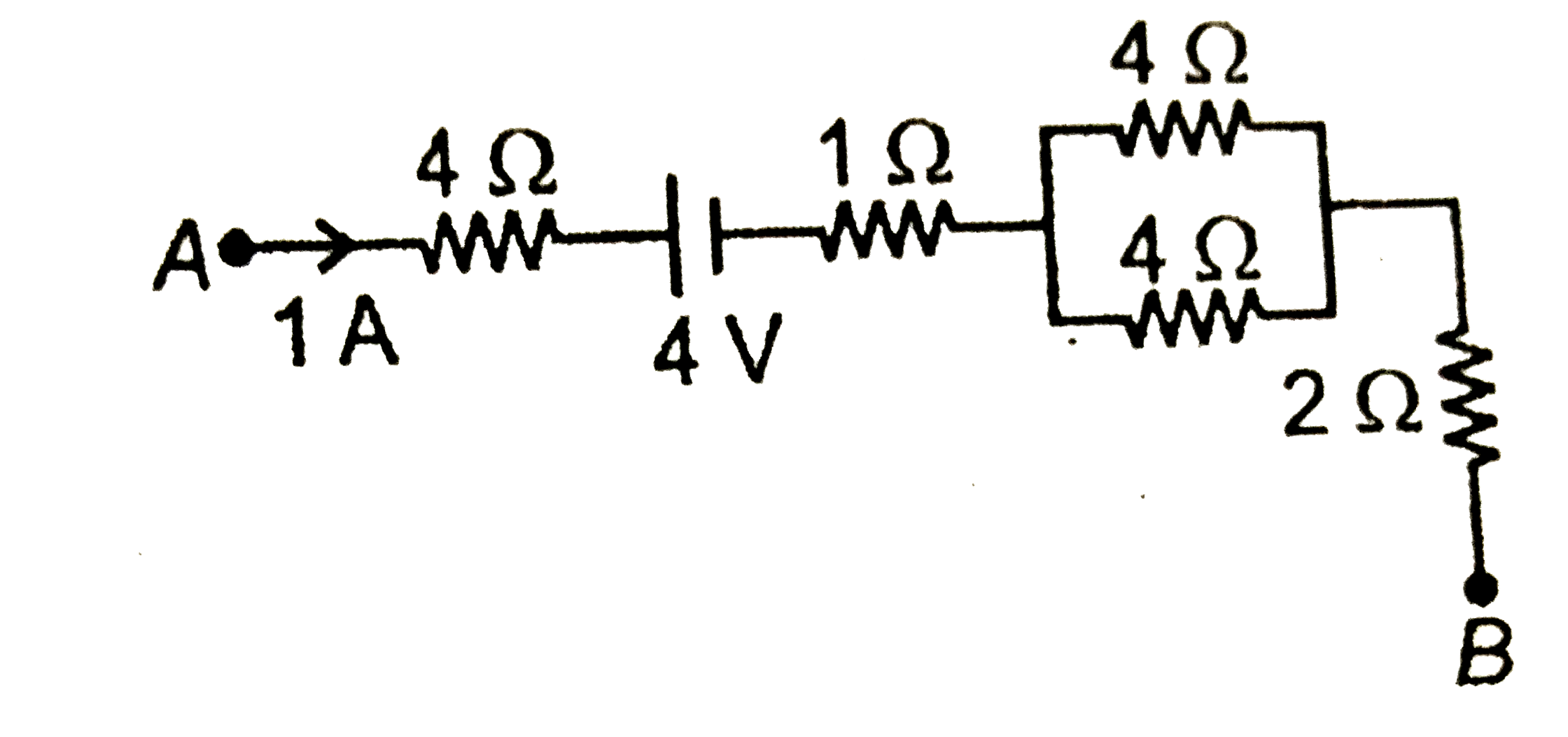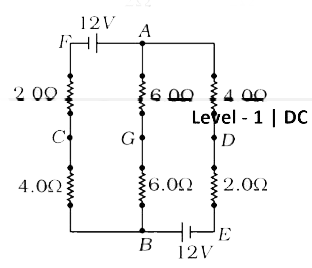Consider a rectangular block of metal of height A, width B and length C as shown in the figure.

If a potential difference of V is applied between the two faces A and B of the block (figure (a)), the current IAB is observed. Find the current that flows if the same potential difference V is applied between the two faces B and C of the block (figure(b)). Give your answers in terms of IAB.
Text Solution
In the first case, the resistance of the block
RAB=ρLengthArea=ρCAB
The current IAB=VRAB=Vρ⋅ABC …(1)
In the second case, the resistance of the block RBC=ρABC
The current IBC=VRBC=Vρ⋅BCA ...(2)
To express IBC in terms of IAB, we multiply and divide equation (2) by AC, we get
IBC=Vρ⋅BCAACAC=(Vρ⋅ABC)⋅C2A2=C2A2⋅IAB
Since C>A, the current IBC>IAB.
|
Topper's Solved these Questions
- CURRENT ELECTRICITYBOOK - FULL MARKSCHAPTER - CURRENT ELECTRICITYEXERCISE - TEXTBOOK EVALUATION (Choose the correct answer)
15 Videos
- CURRENT ELECTRICITYBOOK - FULL MARKSCHAPTER - CURRENT ELECTRICITYEXERCISE - TEXTBOOK EVALUATION (Short Answer Questions)
21 Videos
- COMMUNICATION SYSTEMSBOOK - FULL MARKSCHAPTER - COMMUNICATION SYSTEMSEXERCISE - ADDITIONAL QUESTIONS (Additional problems)
3 Videos
- DUAL NATURE OF RADIATION AND MATTERBOOK - FULL MARKSCHAPTER - DUAL NATURE OF RADIATION AND MATTEREXERCISE - ADDITIONAL QUESTIONS -( ADDITIONAL NUMERICAL PROBLEMS : )
10 Videos
Similar Questions
Knowledge Check
In the circuit shown in the following figure some potential difference is applied between A and B . IF C is joined to D,
 ANo charge will flow between C and DBSome charge will flow between C and DCThe equivalent capacitance between C and D will not changeDthe equivalent capacitance between C and D will change.
ANo charge will flow between C and DBSome charge will flow between C and DCThe equivalent capacitance between C and D will not changeDthe equivalent capacitance between C and D will change.The potential difference (VA−VB) between the point A and B in the given figure is
 A+6VB+9VC−3VD+3V
A+6VB+9VC−3VD+3VIn the circuit shown in figure potential difference between A and B is
 A30 VB60 VC10 VD90 V
A30 VB60 VC10 VD90 V
The potential difference (VA−VB) between the point A and B in the given figure is

View SolutionThe potential difference (VA−VB) between the point A and B in the given figure is

View SolutionFind the potential difference Va−Vb between the points a and b shown in each part of the figure.

View SolutionFind the potential difference Va−Vb between the points a and b shown in each part of the figure.

View SolutionThe potential difference (VA−VB) between the point A and B as shown in the figure is

View Solution

